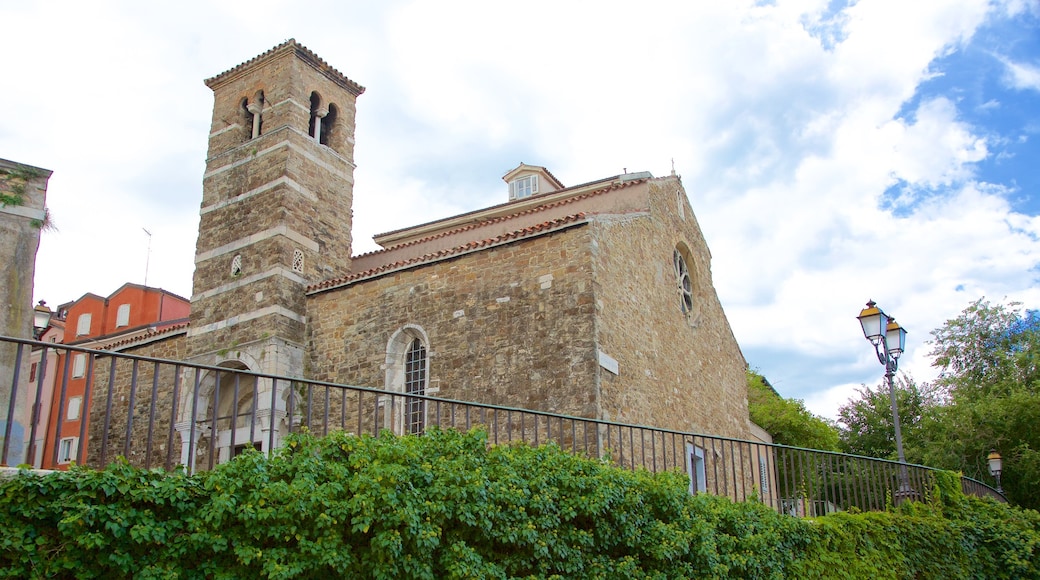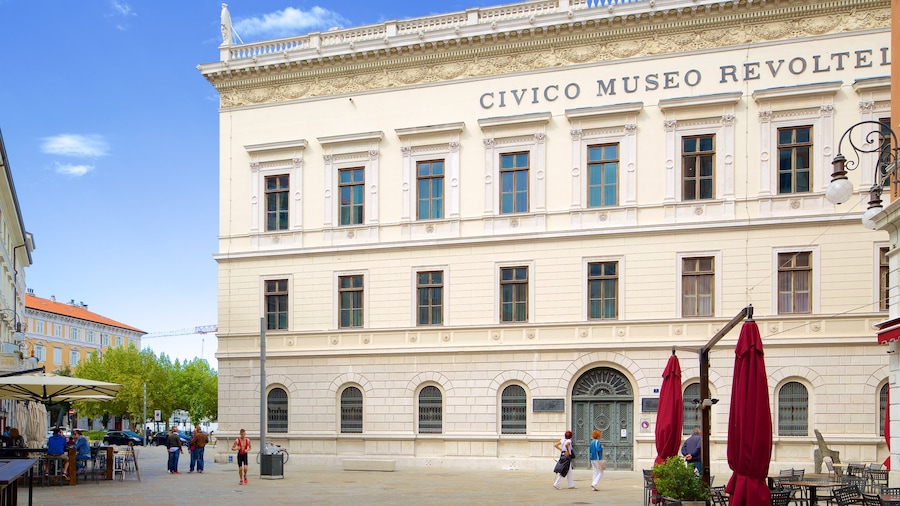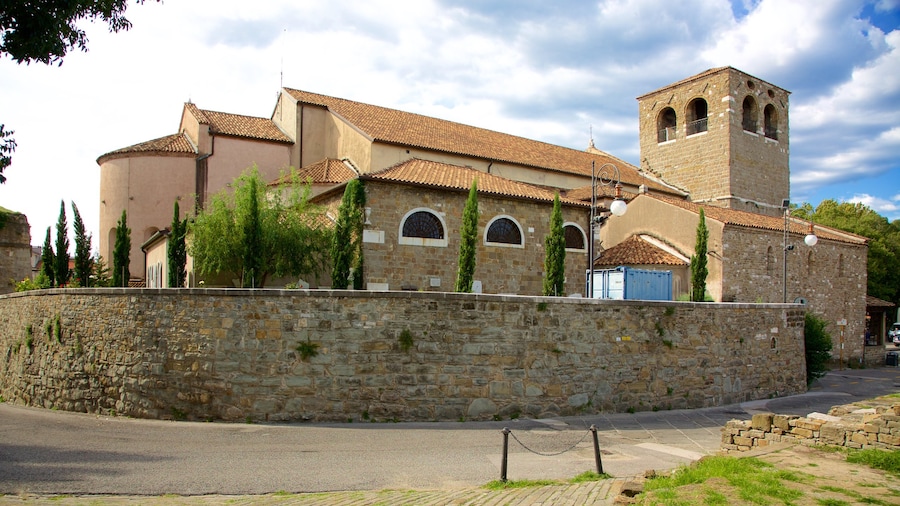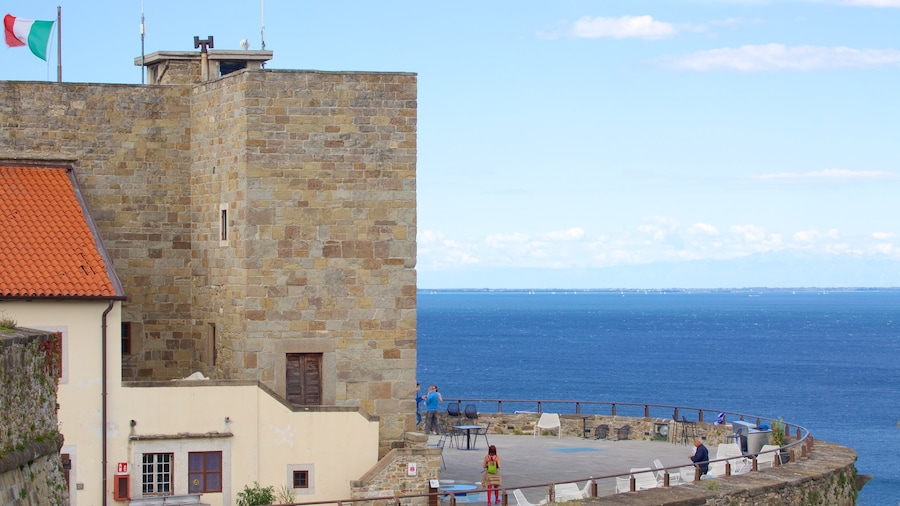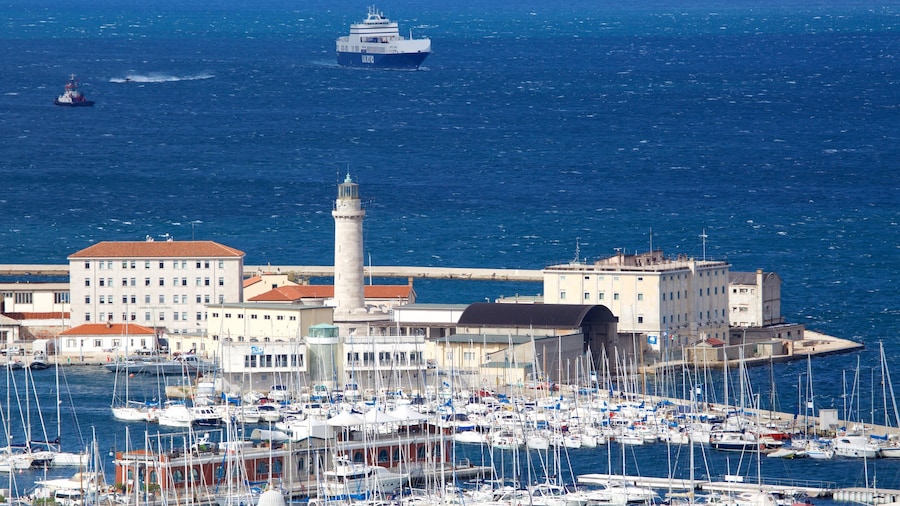The Basilica Paleocristiana (Early Christian Basilica) is a ruined church of significant religious and artistic importance to Trieste. It was built between the 4th and 6th centuries in an area utilized by the city’s Roman rulers as a burial ground. Historians believe that a fire destroyed the church, after which it was replaced by another basilica that stood until the late 1700s. Discovered in 1825, today the Basilica Paelocristiana is open for tours of its Roman-era artwork.
Inside you’ll find two mosaic floors set on differing levels. They testify to the wealth of the church in Trieste and the relationship between the city’s citizens with the Roman city of Aquilea and the Byzantine East.
Note the black and white geometric design of the first floor mosaic. The upper mosaic is perhaps the more interesting and is decorated with polychrome logos intersected by argyle patterns. Look for the inscriptions embedded into the mosaics tiles. These inscriptions mention the names of various benefactors, several of whom originated from Greek and the Far East. There’s also one of the earliest instances of the words Sancta Ecclesia Tergestina (Holy Church of Tergestina).
Free archaeologist-led tours of the church and mosaics take place on Wednesday mornings. Ask at the tourist information office on Piazza dell’Unità d’Italia for full details and out-of-hours visits.
Situated within Trieste’s historic quarter, the Basilica Paleocristiana is a short walk from other major city attractions. Visit the Castello di San Giusto and Cathedral of San Giusto. Browse exhibitions of modern art at Museo Revoltella. Attend a classical music concert at Teatro Lirico Giuseppe Verdi.
Public buses traveling between Piazza delle Cattedrale and Piazza dell’Unità d’Italia stop close to the Basilica Paleocristiana. Parking is available, for a fee, at Trieste port.
